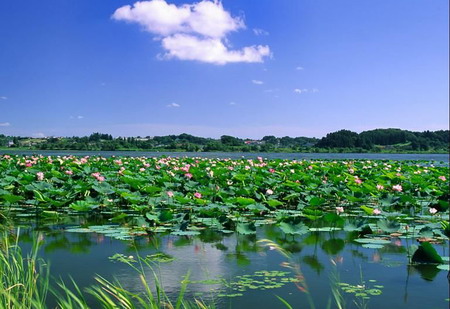|
VI. Detailed description
The pavilion is designed to show a blending of diverse local cultures, its economic prosperity, innovations in science and technology, the remodeling of urban communities in the province’s cities and interactions between urban and rural areas, as well as its location advantage.
1. History and culture of Hebei's cities
Hebei's cities have a long and proud history.
Chengde was once the summer resort capital of the Qing Dynasty (1644-1911). As a famous historical city, it has a wealth of relics including the Eight Outer Temples, China’s largest group of royal temples.
Baoding is located about 140 kilometers south of Beijing, and is nicknamed the “South Gate of the Capital”. Baoding means “protect the capital and safeguard the world” in Chinese. Its history can be dated back to the Western Han Dynasty.
Handan, located in the southwestern part of Hebei, was the capital of the state of Zhao during the Warring States period. The city -- the junction of Shanxi province, Hebei province, Shandong province and Henan province -- is North China’s transportation hub.
Shijiazhuang, the capital of Hebei and a hub of transportation routes, has been experiencing dramatic development since 1949 and has become a business center in northern China.
Urban development contributed to cultural prosperity. Cangzhou martial arts, Wuqiao acrobatics, Weixian paper cutting, Wuqiang New Year woodprints, and Hebei dramas are known with China and around the world.
2. Scenery of Hebei
Hebei, with its rich natural resources and relics, is a famous travel destination at home and abroad. The province is home to the beautiful Bashang grassland, northern China’s largest lake, Baiyangdian Lake, hailed as Kidney of North China, the Beidaihe River, the Ming Great Wall and the Chengde Mountain Resort. The eastern end of the Ming Great Wall is located on the coast at Shanhaiguan Pass, known as the "First Pass of The World".
 |
| Baiyangdian Lake |
|